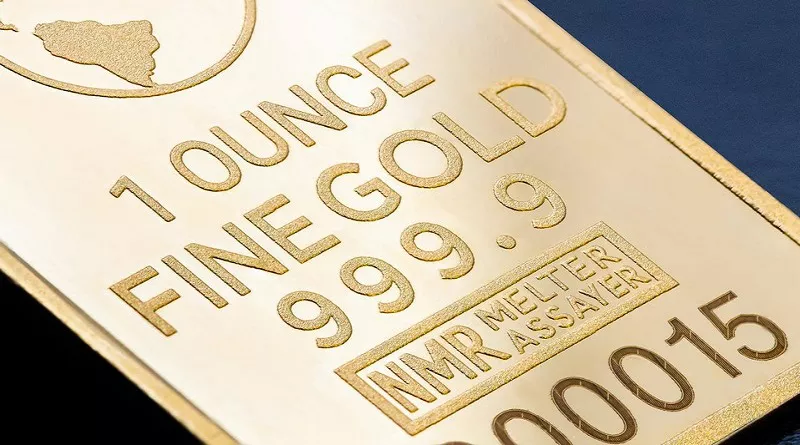A recent comparison of market capitalizations between traditional precious metals and Bitcoin has stirred considerable interest among traders and investors, highlighting evolving dynamics across financial markets. In a widely shared tweet on May 21, financial strategist Rob Solomon revealed the stark contrast in market values: Gold leads with a market cap of $22.26 trillion, followed by Bitcoin at $2.12 trillion, Silver at $1.89 trillion, and Platinum trailing at $0.27 trillion.
This data underscores Bitcoin’s emergence as a significant asset class, surpassing Silver and Platinum but still trailing far behind Gold. For cryptocurrency traders, the comparison is more than a curiosity — it serves as a critical benchmark for potential market shifts, particularly as Bitcoin continues to gain recognition as “digital gold” among institutional and retail investors alike.
As of 10:00 AM UTC on May 21, Bitcoin was trading near $106,000 per coin on major exchanges including Binance, marking a 2.3% gain in the prior 24 hours, according to CoinGecko. Simultaneously, Gold futures on COMEX edged up 0.8% to $2,450 per ounce, Bloomberg reported. This parallel upward movement reflects a broader risk-on sentiment influencing multiple asset classes, potentially driven by macroeconomic concerns such as inflationary pressures and geopolitical uncertainties.
The interconnectedness of these markets is further evident in stock indices. The S&P 500 rose 0.5% to 5,320 points by 11:00 AM UTC, per Yahoo Finance, signaling moderate optimism among investors. Such trends highlight the importance for traders to understand how Bitcoin’s price action relates to traditional safe havens like Gold and Silver — whether it will continue to track these assets or carve out a unique position as a speculative investment.
Institutional Interest Fuels Bitcoin Trading Volume and ETF Inflows
By 2:00 PM UTC, Binance reported Bitcoin’s 24-hour trading volume surged to $38.5 billion, up 15% from the previous day, indicating heightened market activity. This uptick coincided with substantial institutional inflows into Bitcoin exchange-traded funds (ETFs). Notably, BlackRock’s iShares Bitcoin Trust (IBIT) recorded net inflows of $290 million on May 20, according to Farside Investors.
Such institutional engagement suggests growing acceptance of Bitcoin as a store of value akin to Gold, especially amid volatility in technology-focused equities. The Nasdaq Composite Index dipped 0.3% to 16,780 points by 3:00 PM UTC, MarketWatch reported, illustrating rotation of capital between equities and alternative assets.
These market movements create opportunities in key cryptocurrency pairs such as BTC/USD and BTC/ETH. Ethereum, for example, traded at $3,800 on Coinbase at the same time, up 1.8%. Meanwhile, crypto-related stocks also benefited: MicroStrategy (MSTR) shares climbed 4.2% to $1,580 by 1:00 PM UTC, Google Finance data showed, reflecting spillover effects from Bitcoin’s strength.
Traders may find potential arbitrage plays between spot Bitcoin prices and related equities, particularly during volatile stock market hours.
Technical Indicators and On-Chain Data Signal Bullish Momentum
From a technical standpoint, Bitcoin’s price momentum on May 21 showed promising signs. At 4:00 PM UTC, BTC/USD broke above a key resistance level of $105,500 on the 4-hour chart. The Relative Strength Index (RSI) stood at 62, suggesting room for further gains before reaching overbought territory, according to TradingView.
Supporting this bullish outlook, blockchain analytics firm Glassnode reported a 7% rise in Bitcoin wallet addresses holding more than one BTC, hitting 1.02 million addresses by 5:00 PM UTC. This accumulation trend indicates increasing confidence among retail and smaller institutional holders.
Correlation analysis also reveals a tightening relationship between Bitcoin and Gold. Data from Skew shows a 30-day correlation coefficient of 0.68 as of May 21, demonstrating how demand for safe-haven assets in commodities and stocks is increasingly influencing cryptocurrency markets.
In equities, the Dow Jones Industrial Average gained 0.7% to 39,800 points by 6:00 PM UTC, per CNN Business. This risk-on environment often benefits Bitcoin during bullish phases in stocks. However, traders are cautioned to watch for sudden reversals, as elevated stock valuations could prompt profit-taking, potentially impacting Bitcoin liquidity.
Growing Linkage Between Bitcoin and Equity Markets Reflects Institutional Flows
Recent trends suggest a growing interdependence between Bitcoin and stock markets, especially through institutional investment channels. Bitcoin’s price performance often mirrors tech-heavy indices such as the Nasdaq, which recovered to 16,820 points by 7:00 PM UTC, Reuters reported.
Coinbase Global (COIN) shares rose 3.1% to $225 concurrently, signaling positive sentiment for crypto-linked equities. The influx of institutional capital into Bitcoin ETFs and rising crypto-related stock prices reflect a broad capital rotation from traditional markets to digital assets.
Market participants should remain vigilant around key economic data releases, as stock market volatility could serve as a catalyst for Bitcoin price fluctuations. The current environment positions Bitcoin as a versatile asset for both short-term trading and long-term holding strategies, blending features of a macro hedge with speculative appeal.


